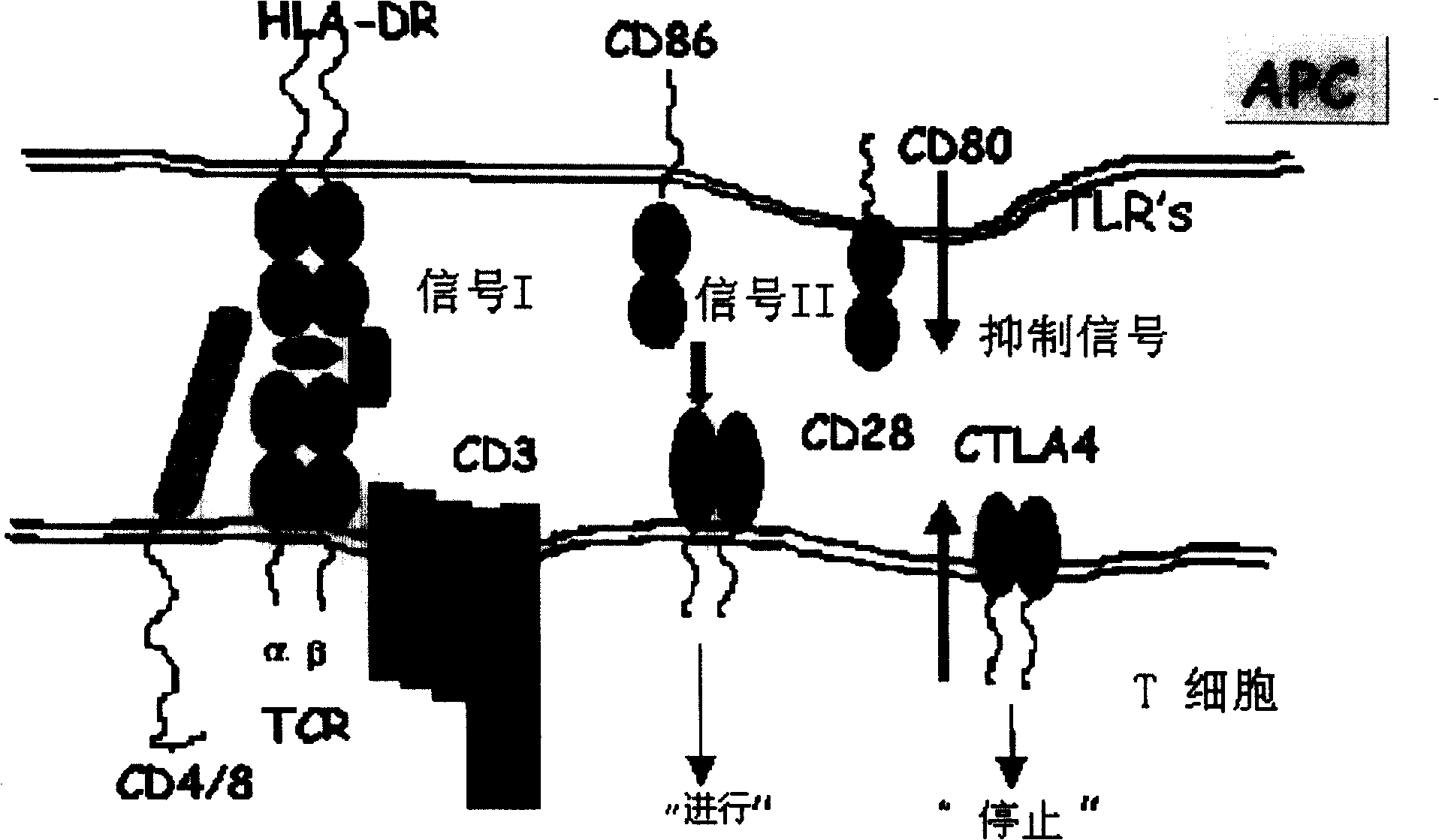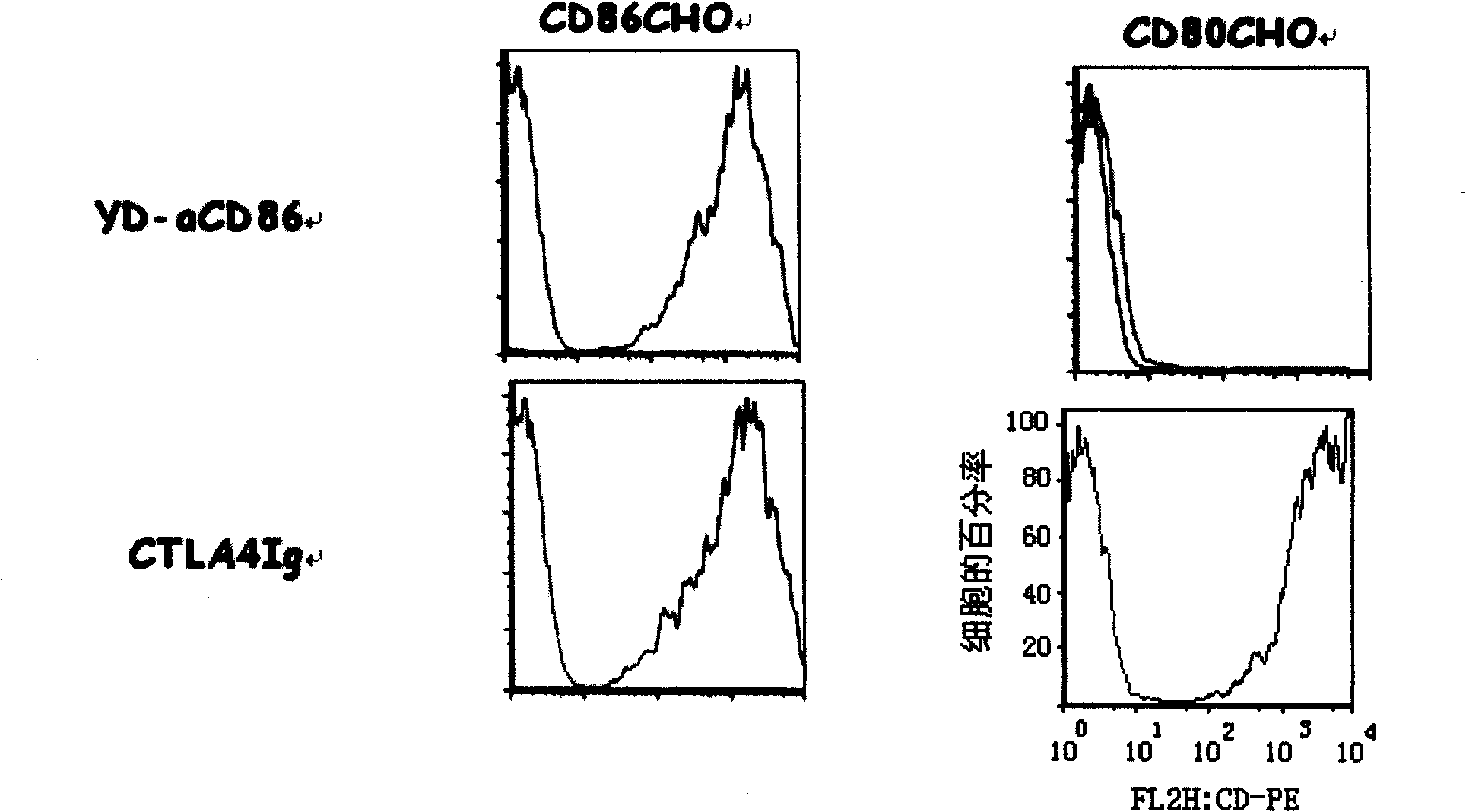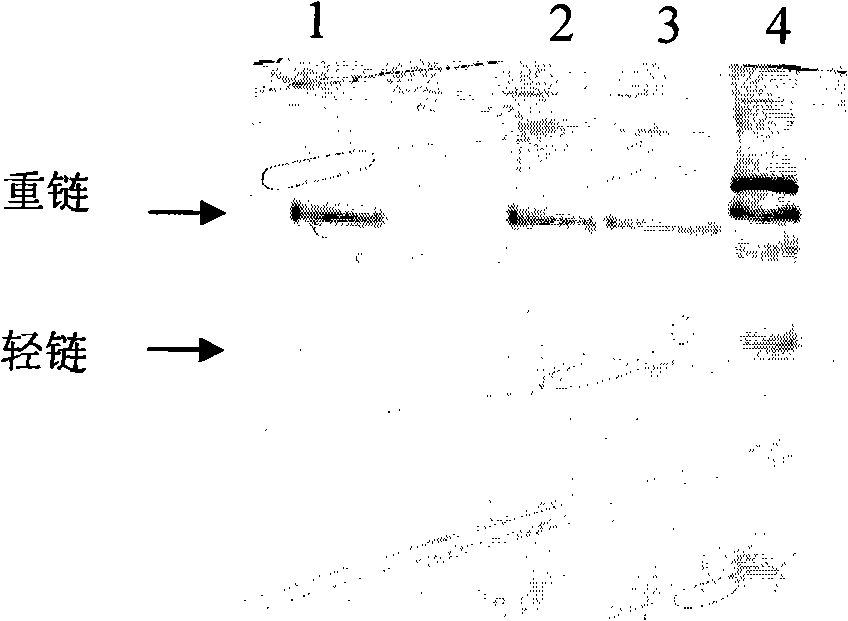Anti-CD86 humanized monoclonal antibody
A monoclonal antibody and humanized technology, applied in the field of biological immunology, can solve the problems of weak tumor cell killing ability, short half-life of mouse antibody, weak ADCC effect, etc.
- Summary
- Abstract
- Description
- Claims
- Application Information
AI Technical Summary
Problems solved by technology
Method used
Image
Examples
Embodiment Construction
[0021] Using DNA recombination technology to insert the light chain and heavy chain variable region genes of the mouse monoclonal antibody into the expression vector containing the human antibody constant region, transform mammalian cells to express the human-mouse chimeric antibody, and the humanization degree reaches about 70%. , the variable region of the heterologous monoclonal antibody is completely retained, its affinity activity is maintained to the greatest extent, and the immunogenicity is reduced.
[0022] 1. Cloning of CD86 gene
[0023] Human blood was extracted from a vein, centrifuged by FICOLL density, and the nucleated cell part of the upper layer was taken. After washing with PBS, the total RNA was extracted by the Trizol method, and then cDNA was synthesized under the action of reverse transcriptase with Oligo(dT) as a primer, and then PCR was used. method to amplify the full-length gene of human CD86.
[0024] 2. Antigen preparation and animal immunization ...
PUM
 Login to View More
Login to View More Abstract
Description
Claims
Application Information
 Login to View More
Login to View More - R&D Engineer
- R&D Manager
- IP Professional
- Industry Leading Data Capabilities
- Powerful AI technology
- Patent DNA Extraction
Browse by: Latest US Patents, China's latest patents, Technical Efficacy Thesaurus, Application Domain, Technology Topic, Popular Technical Reports.
© 2024 PatSnap. All rights reserved.Legal|Privacy policy|Modern Slavery Act Transparency Statement|Sitemap|About US| Contact US: help@patsnap.com










